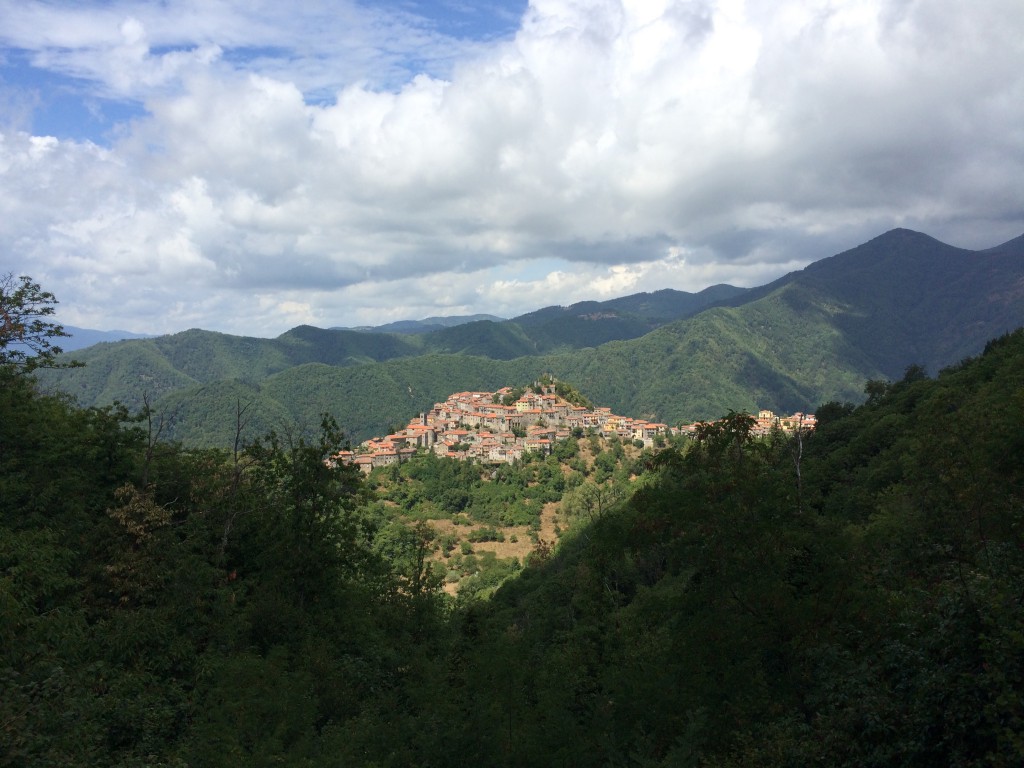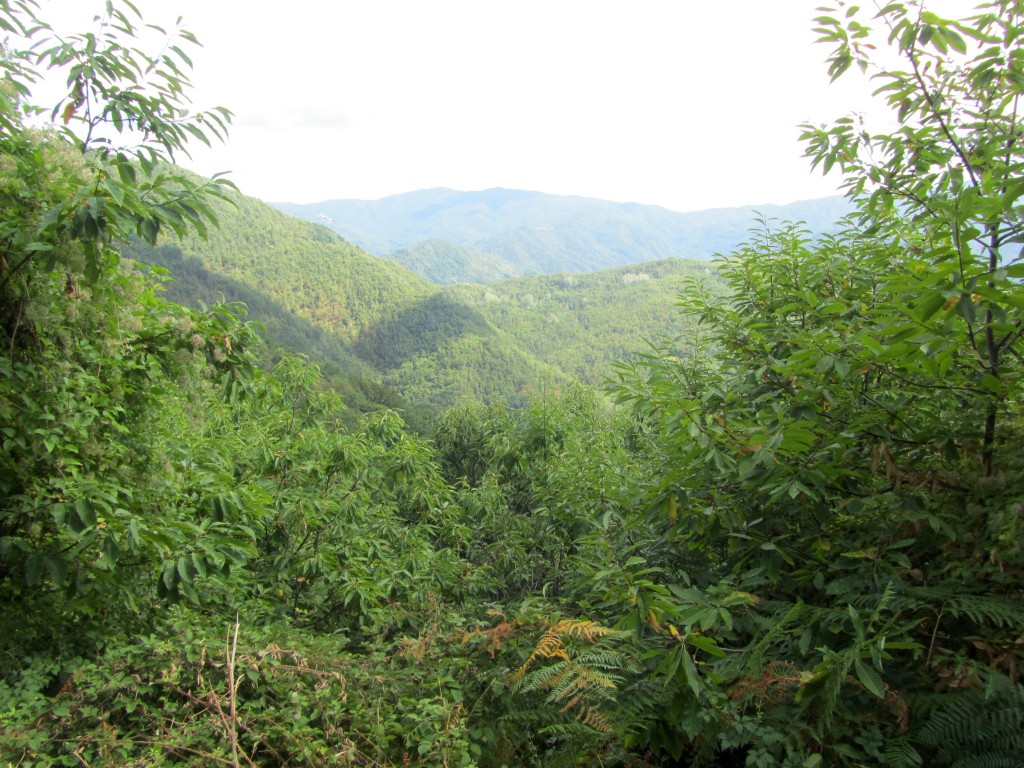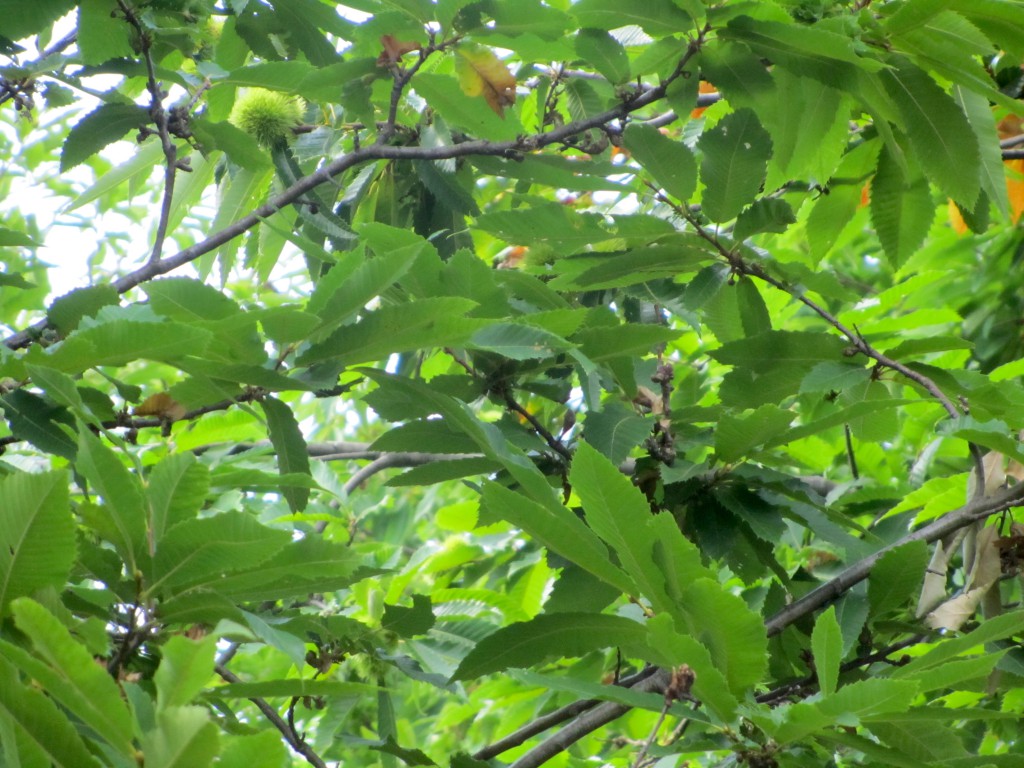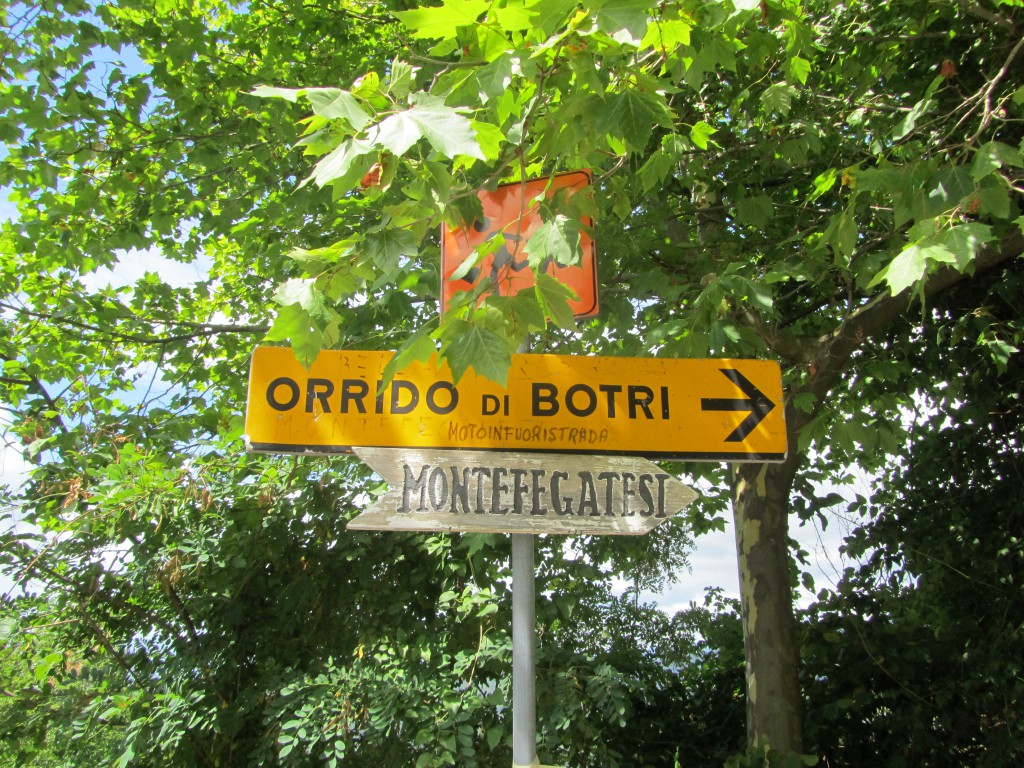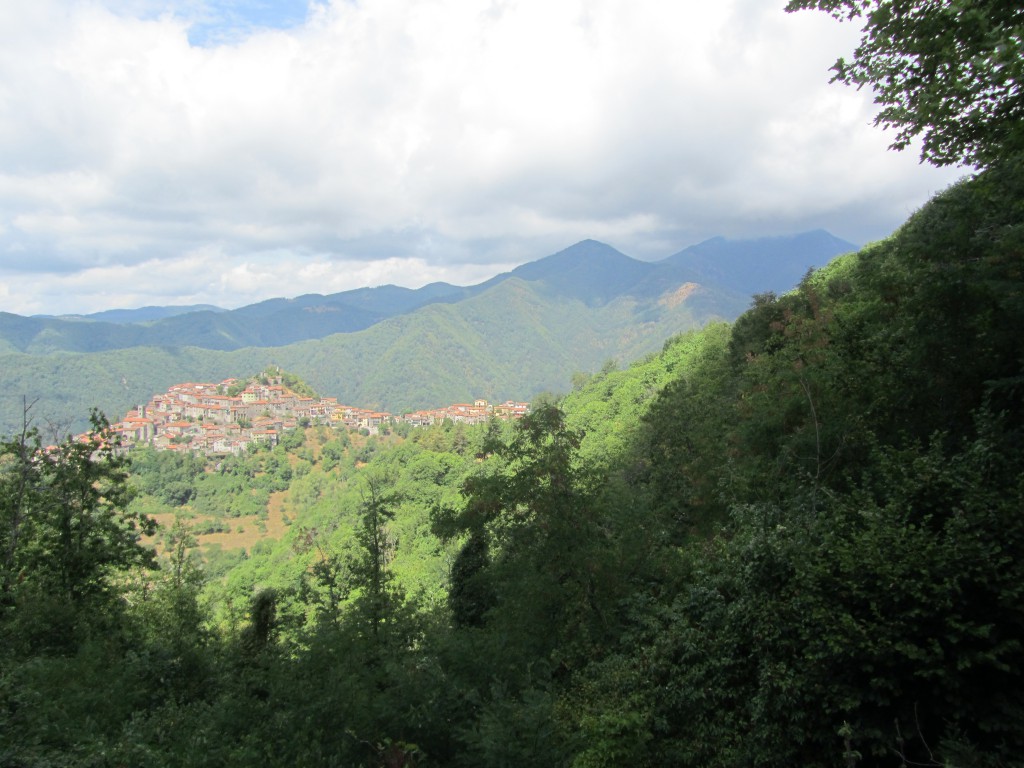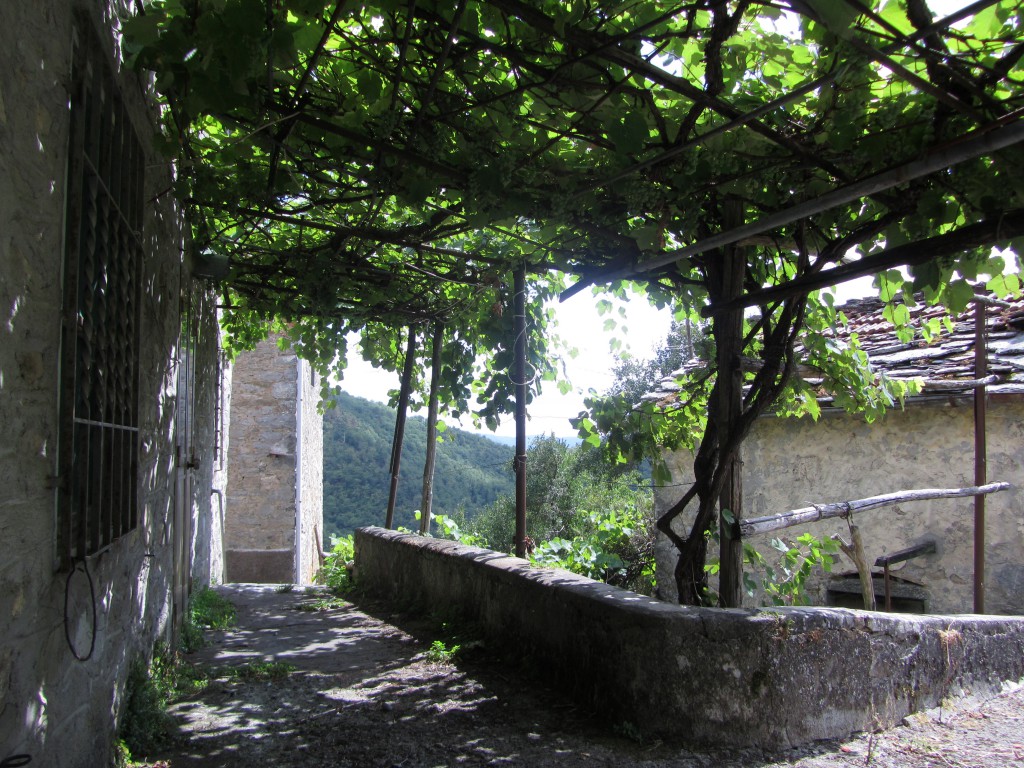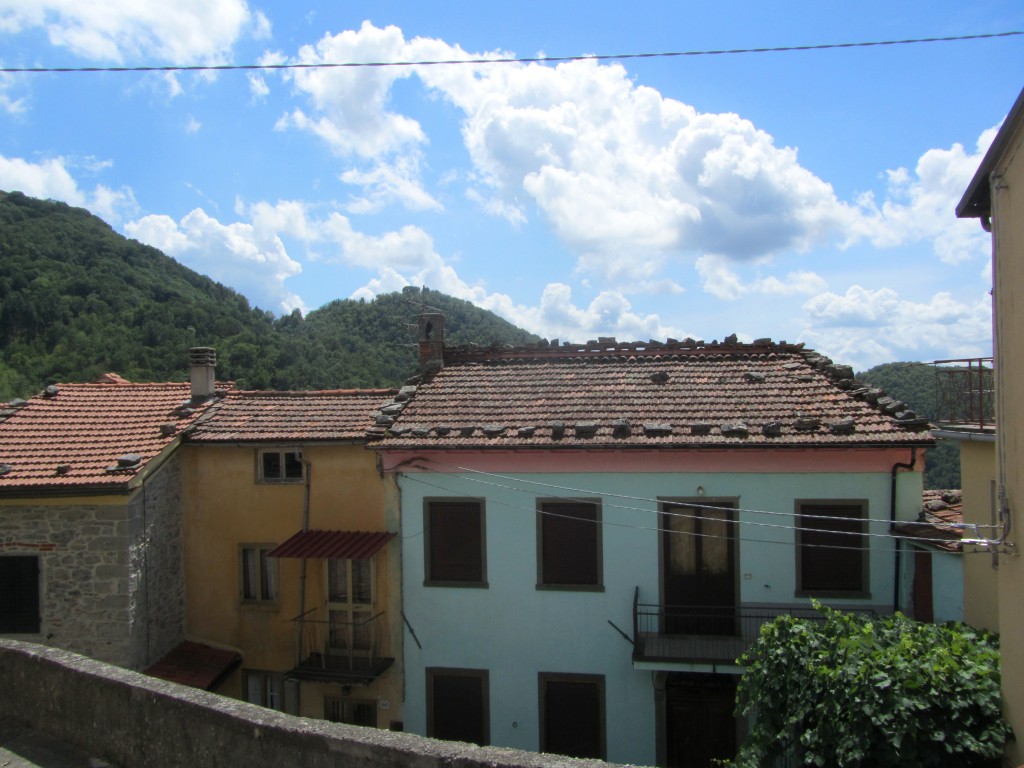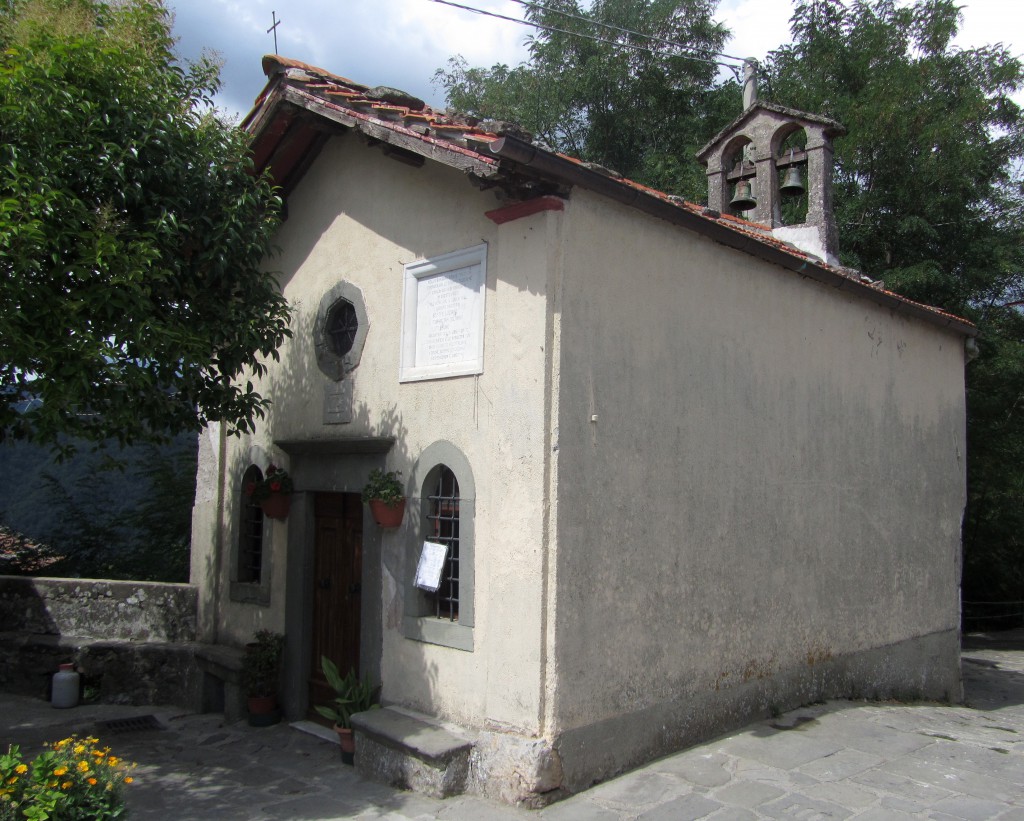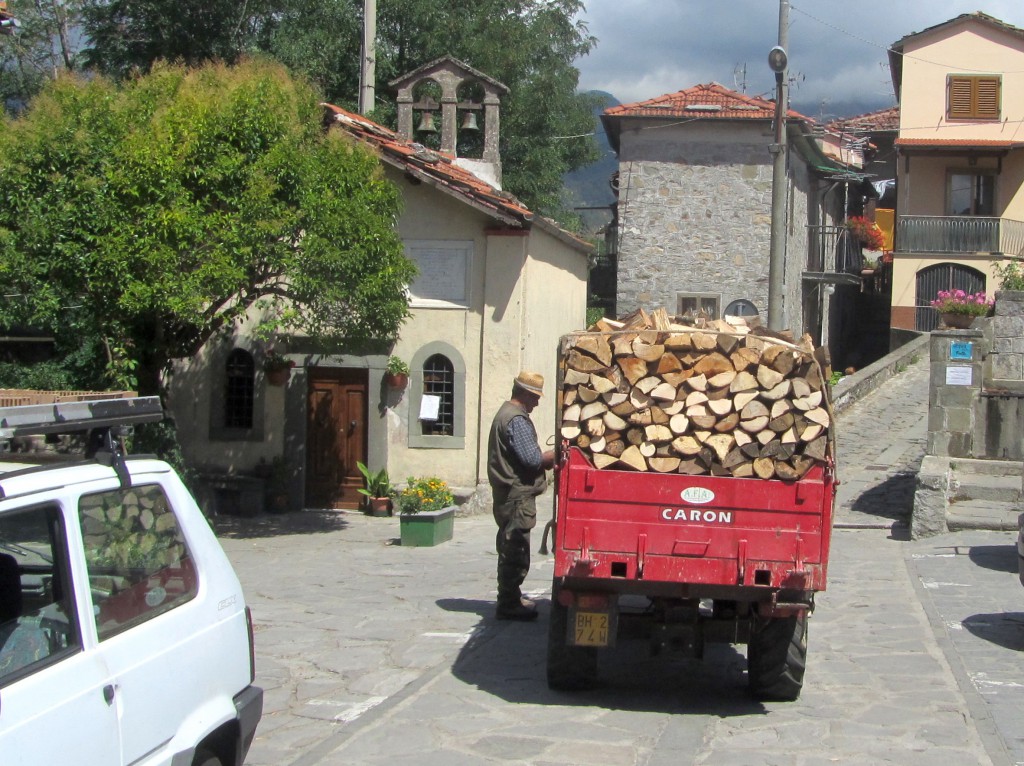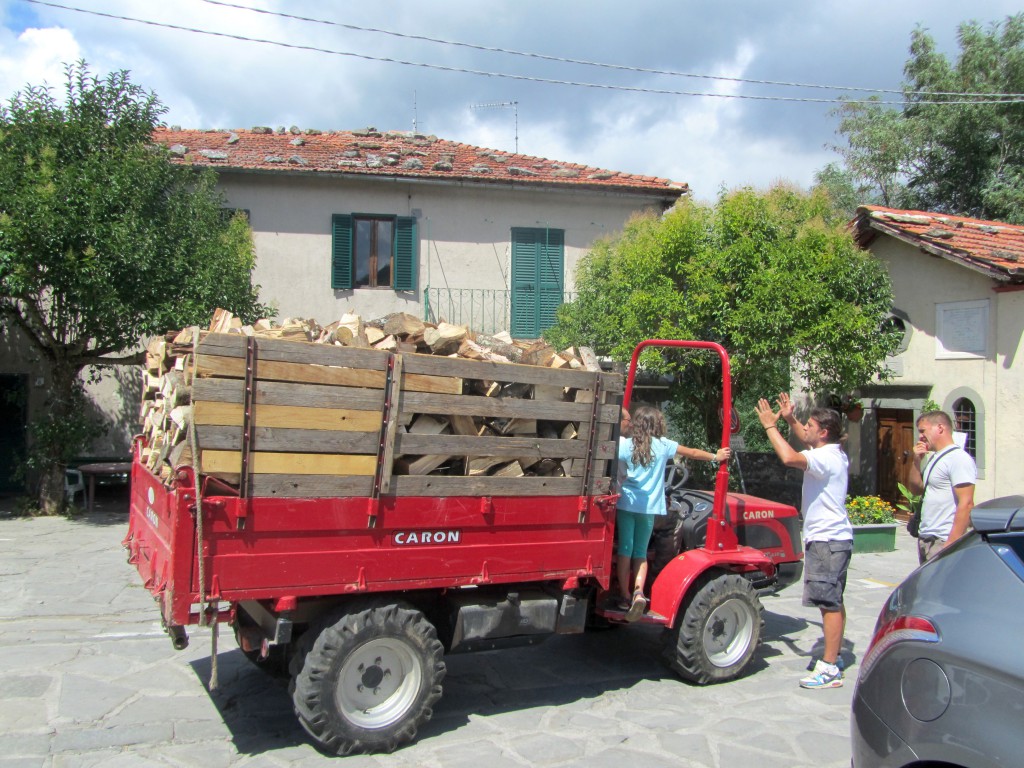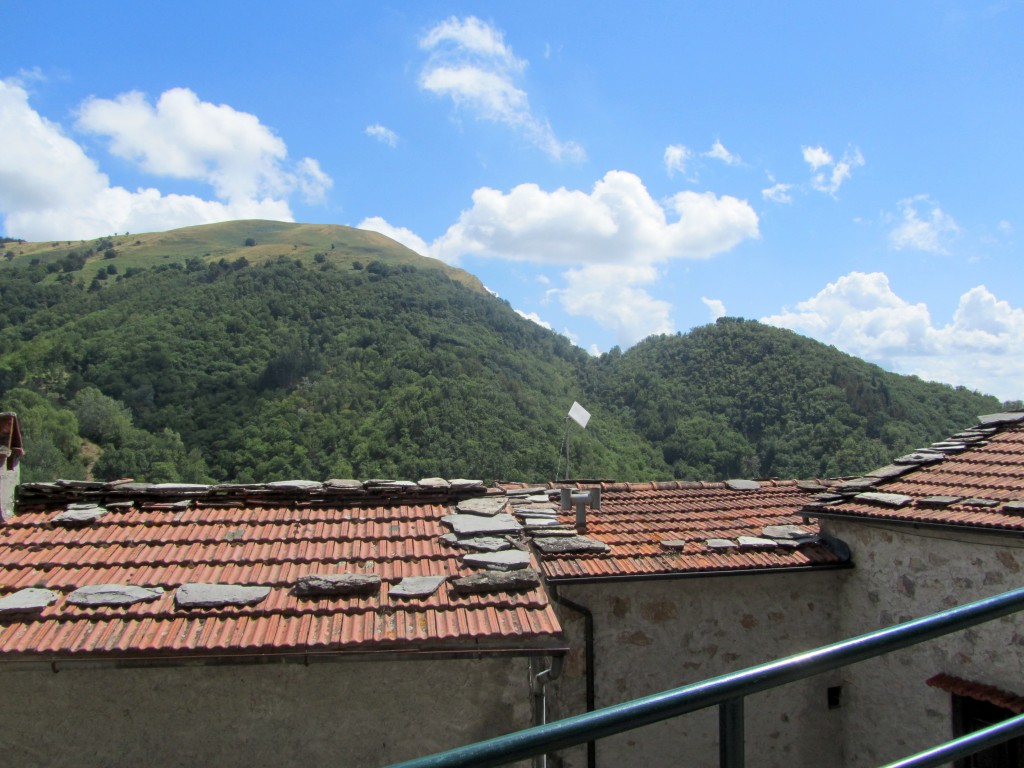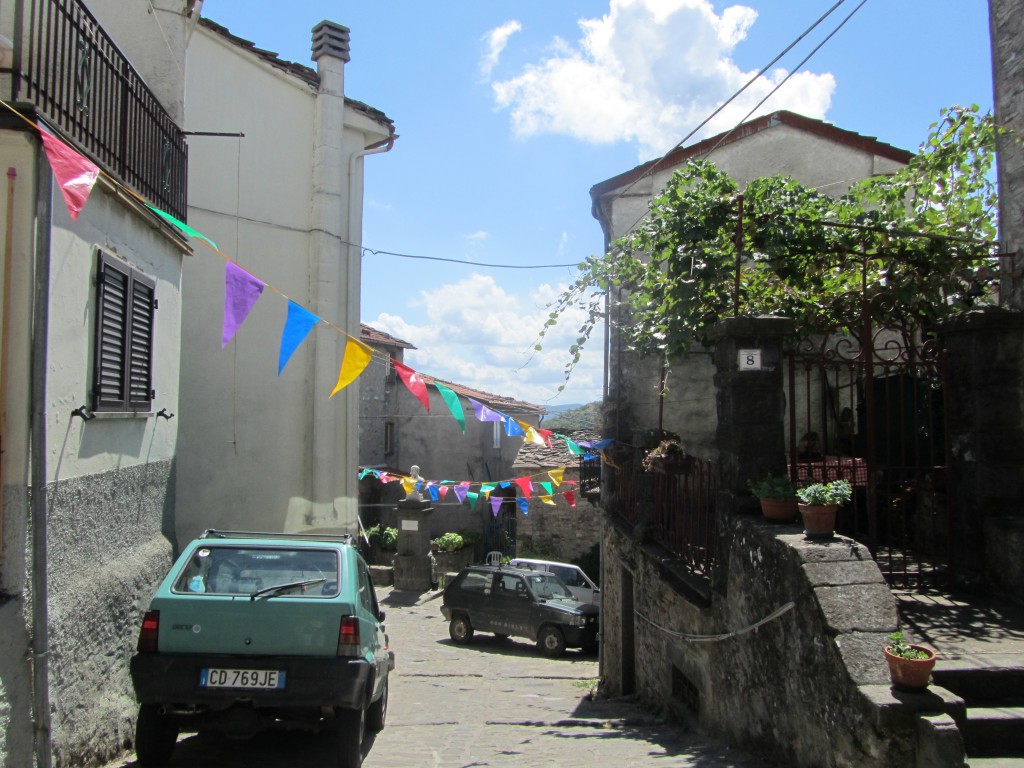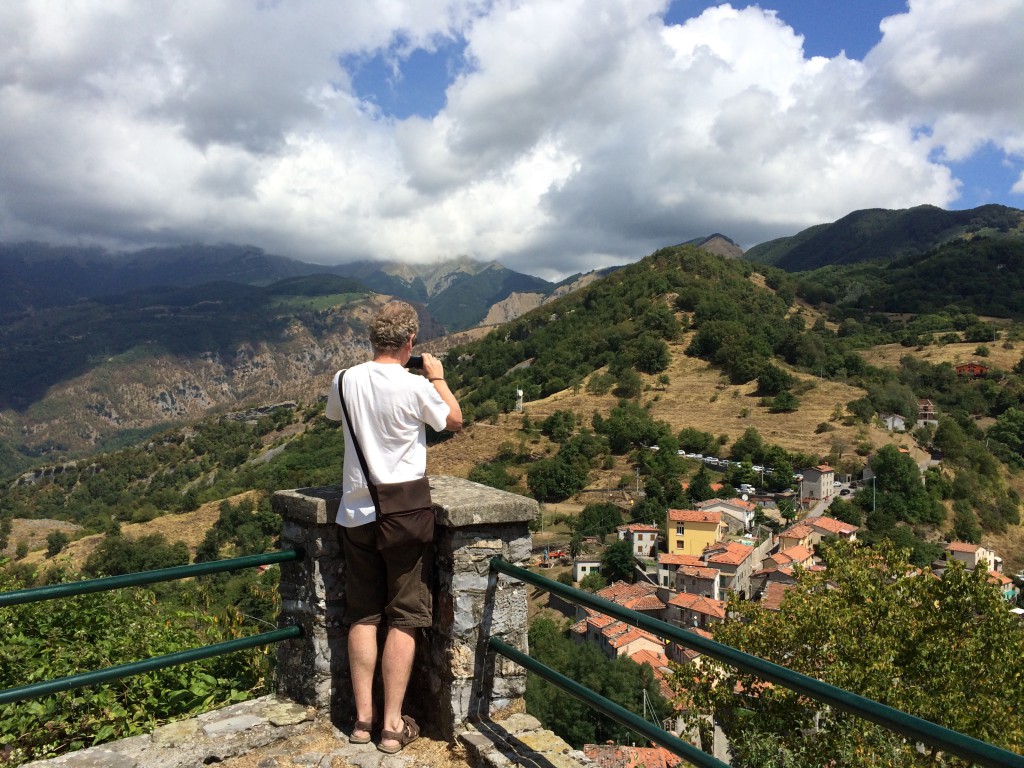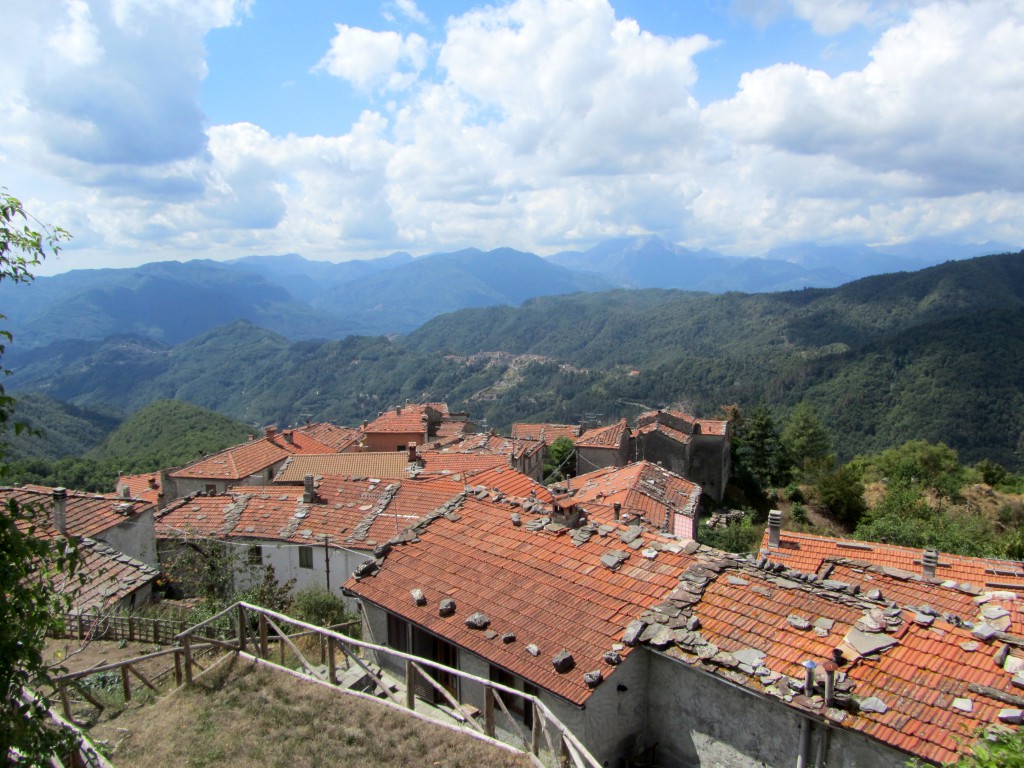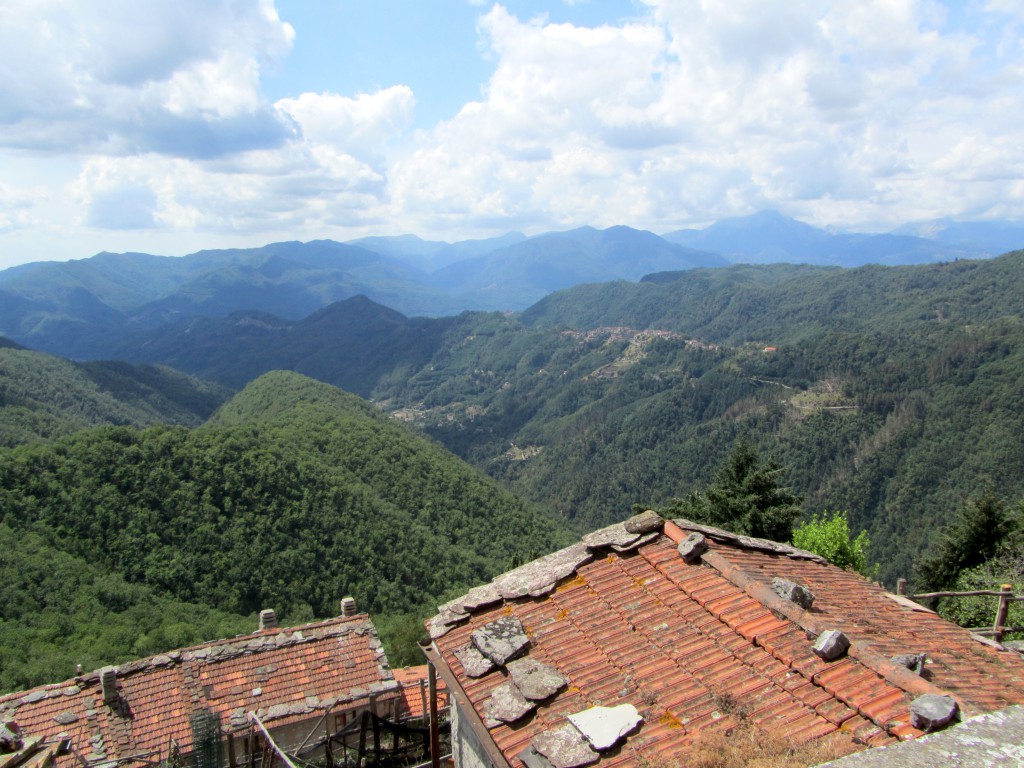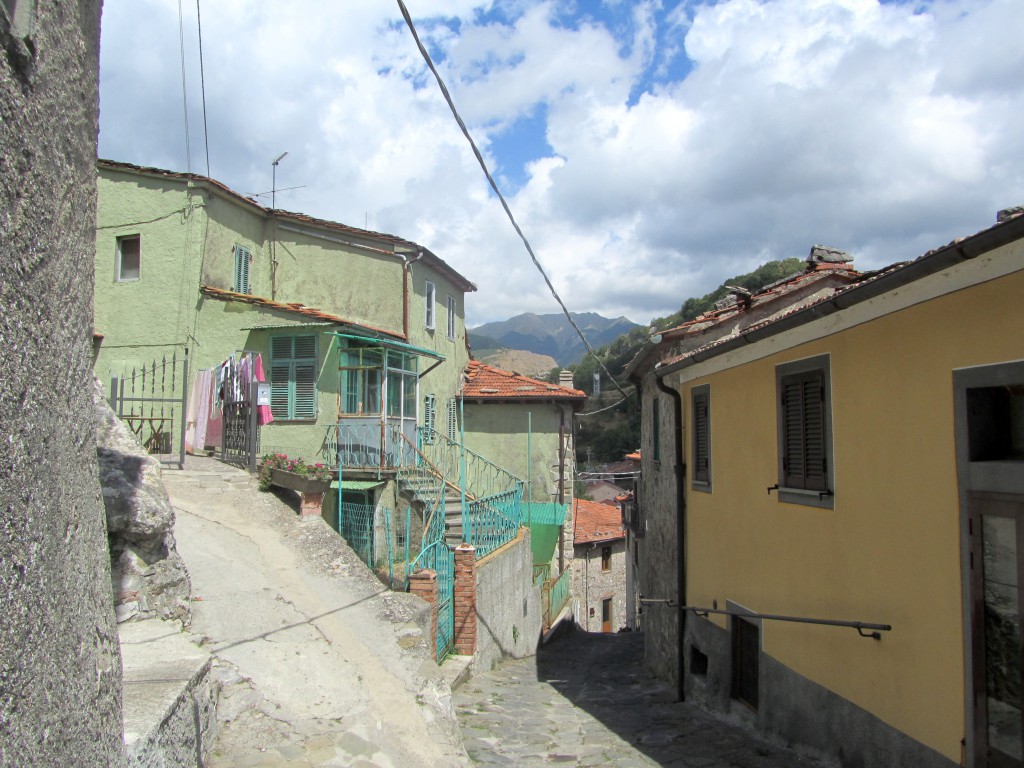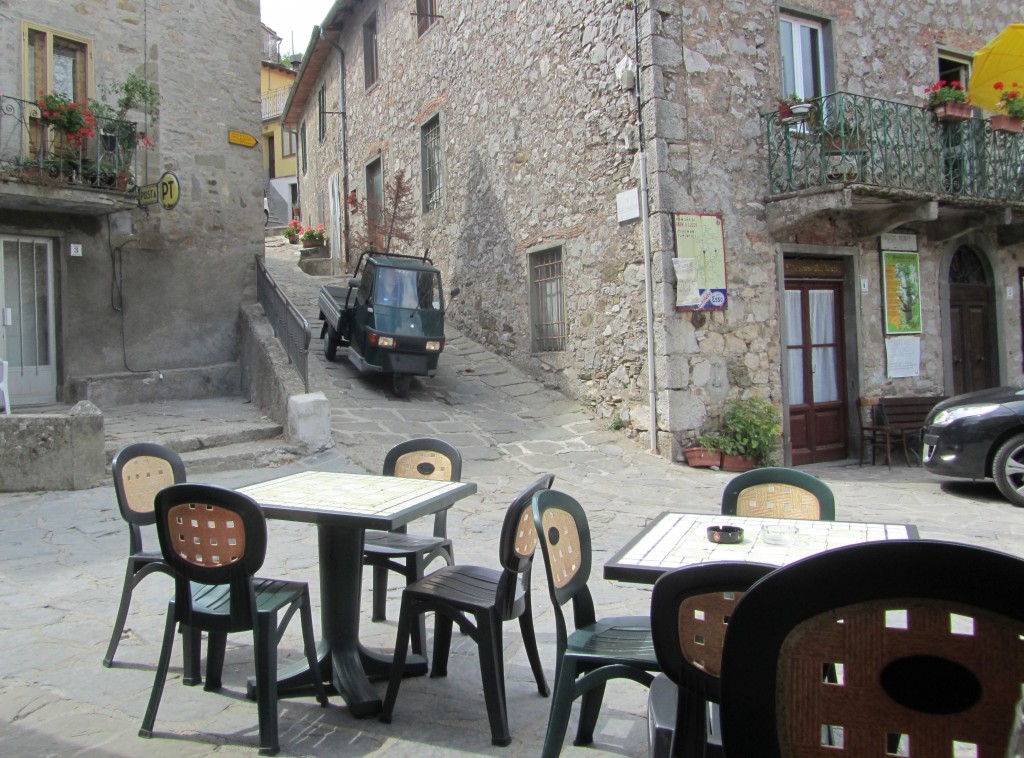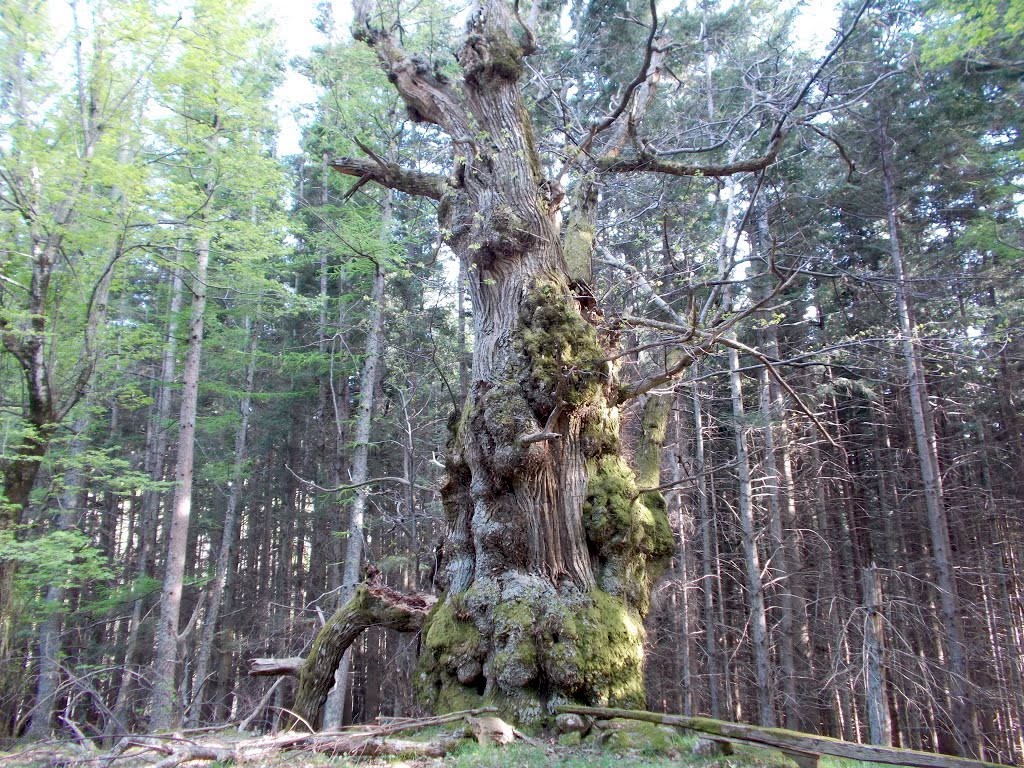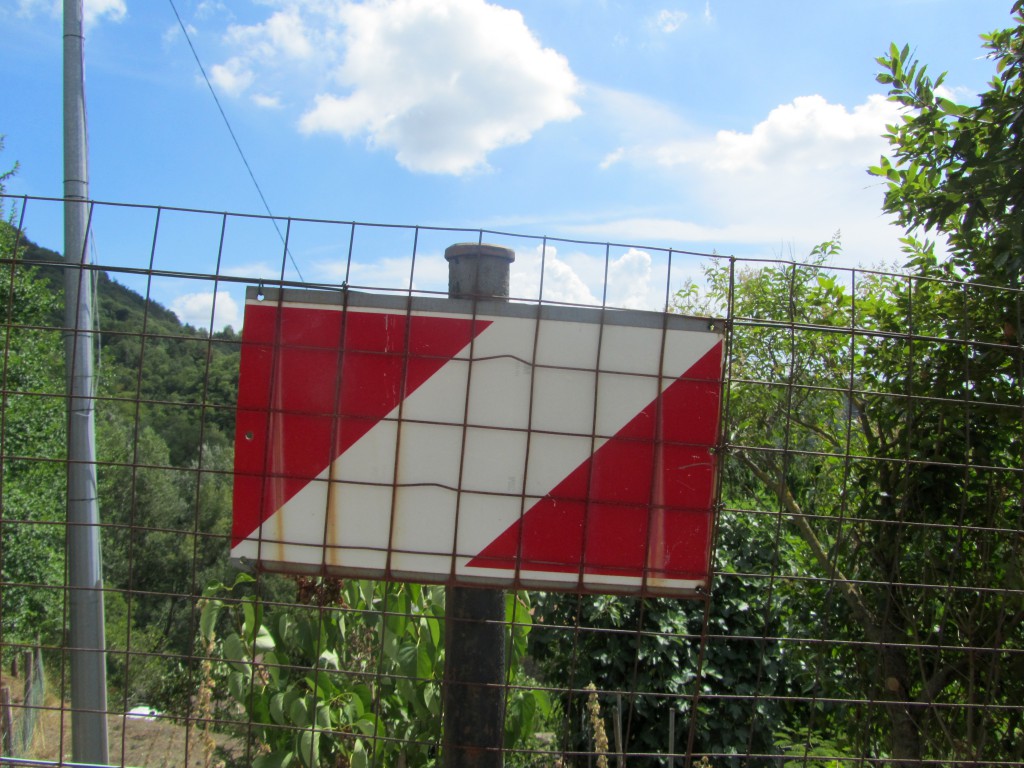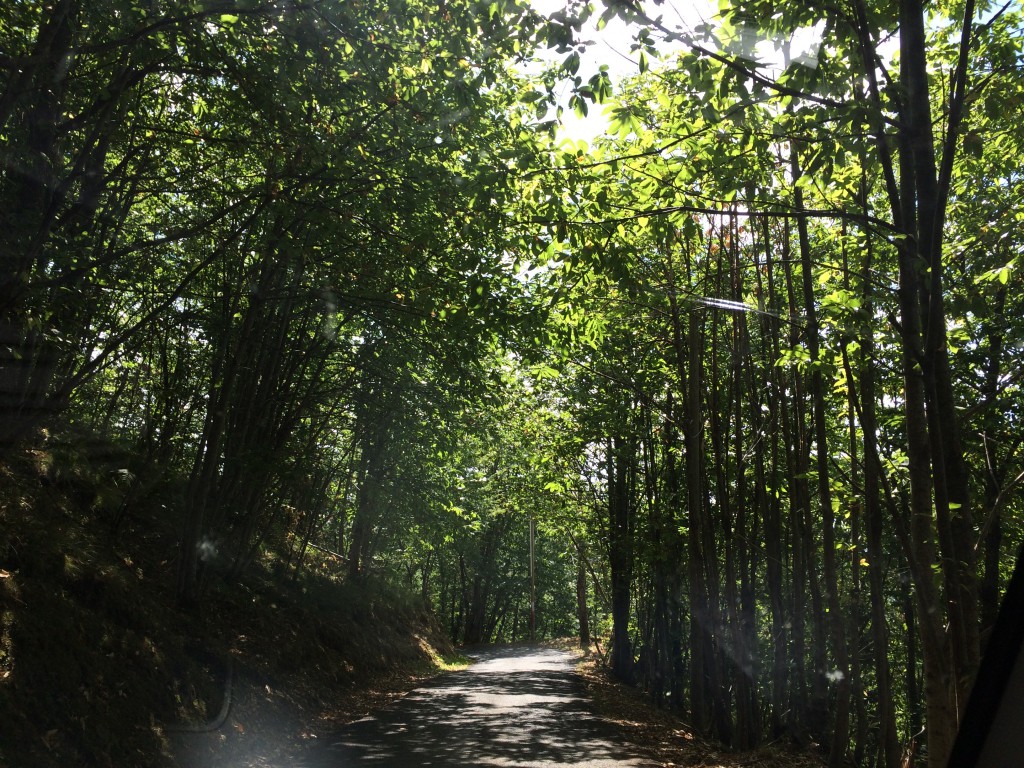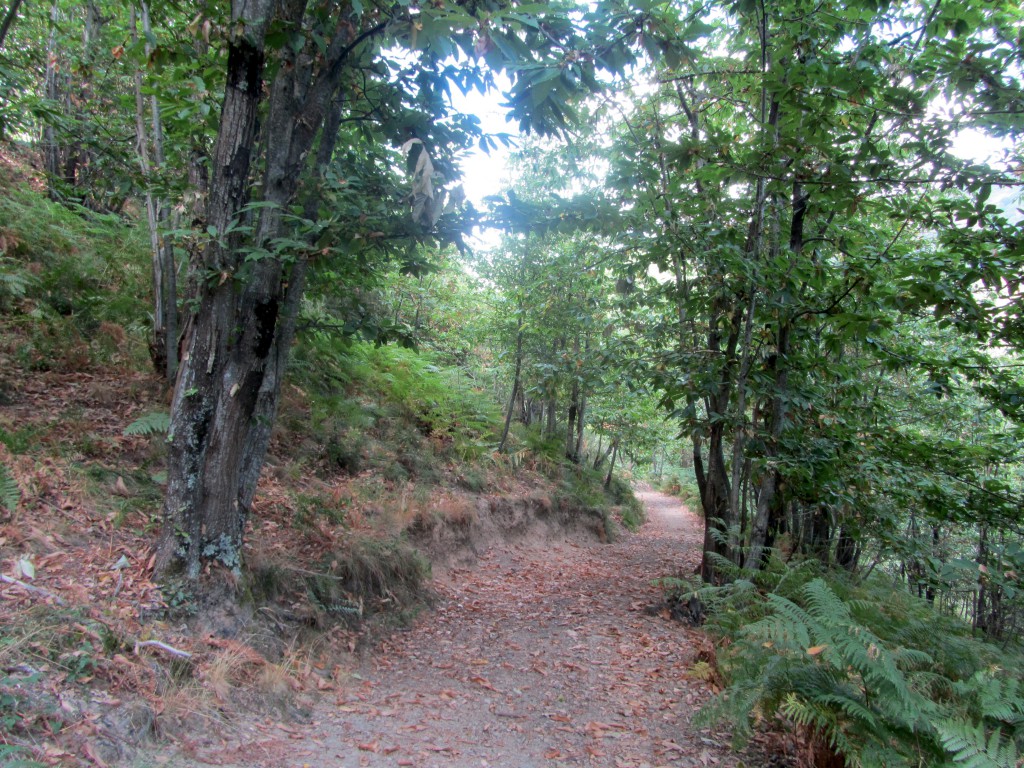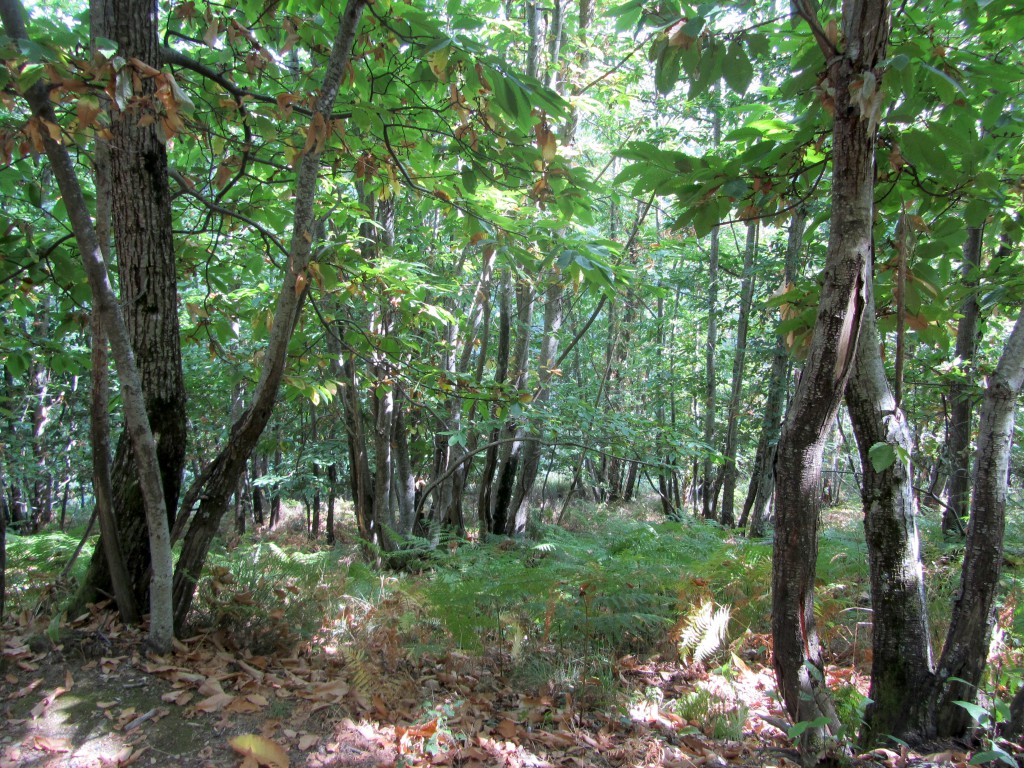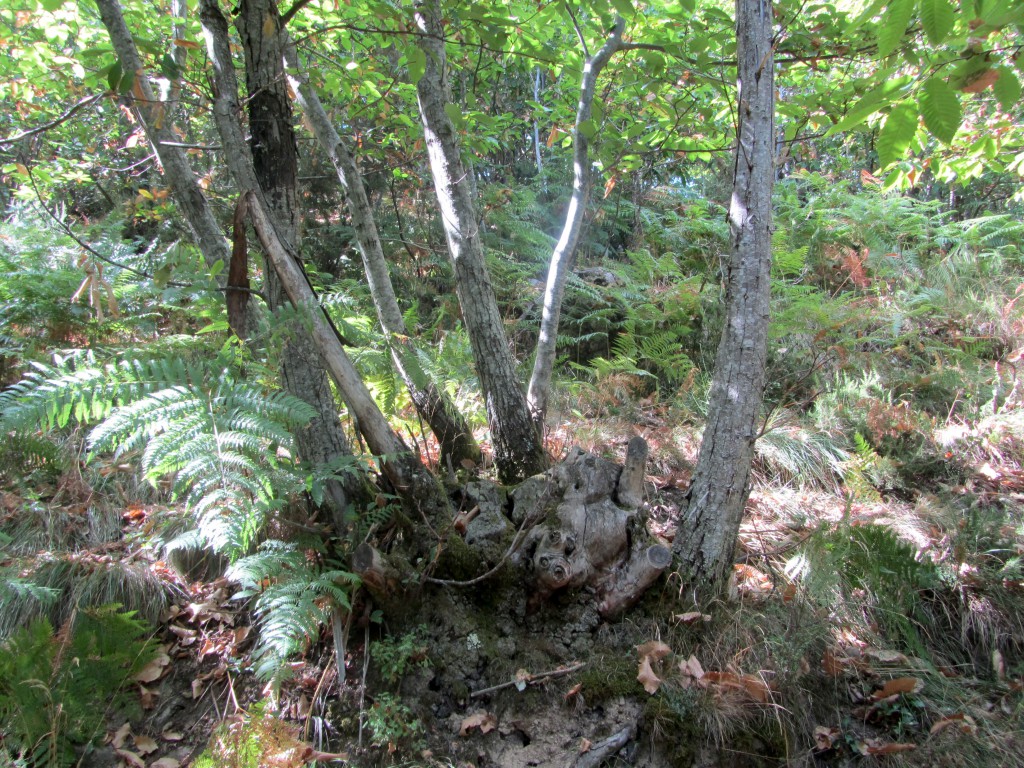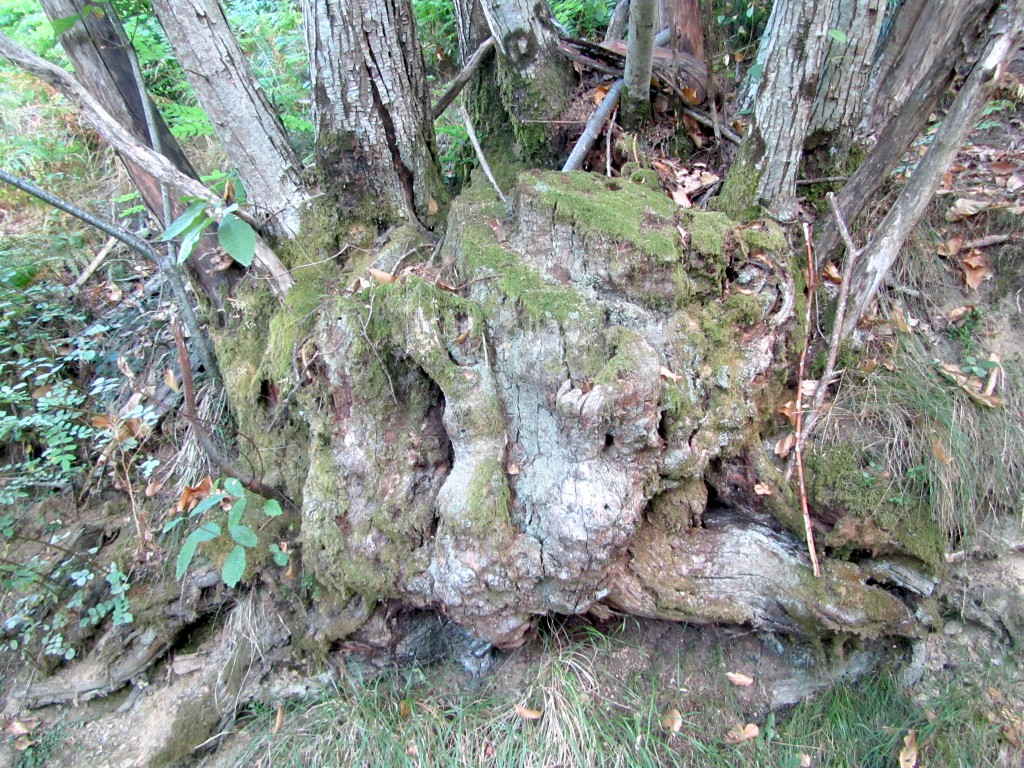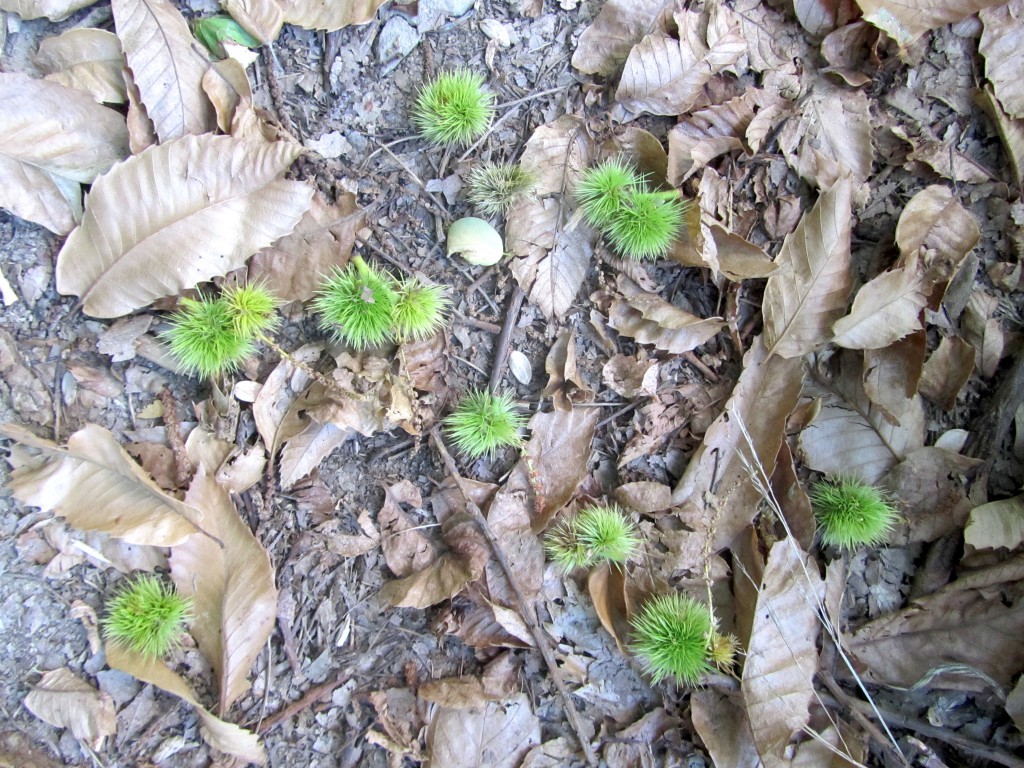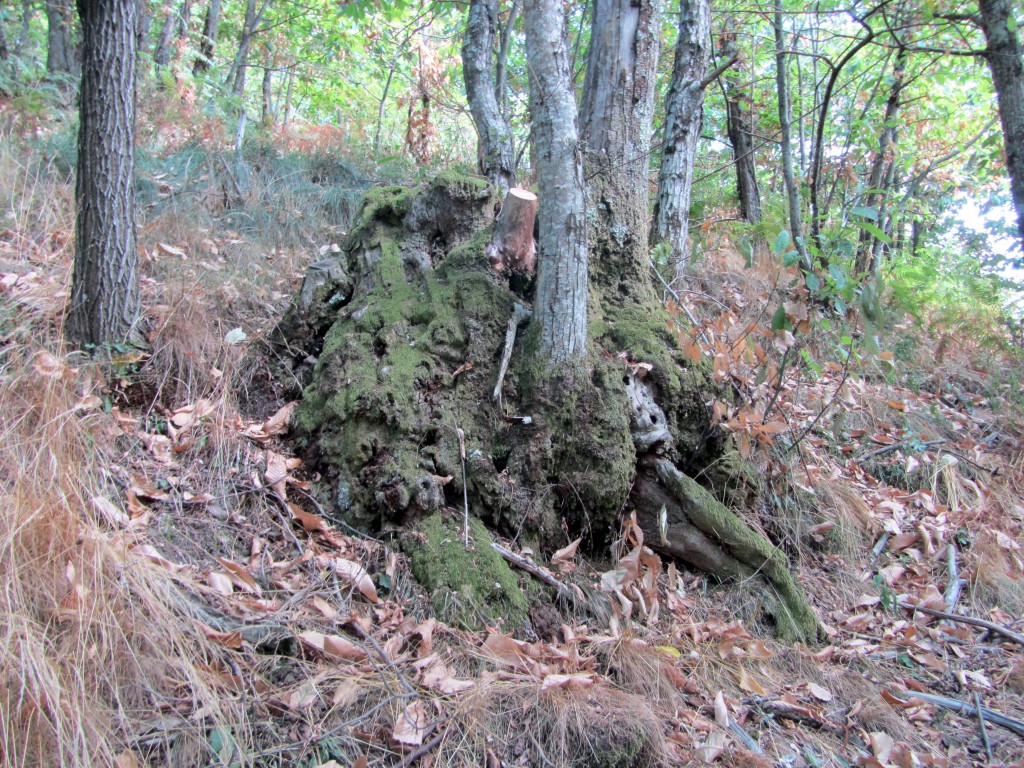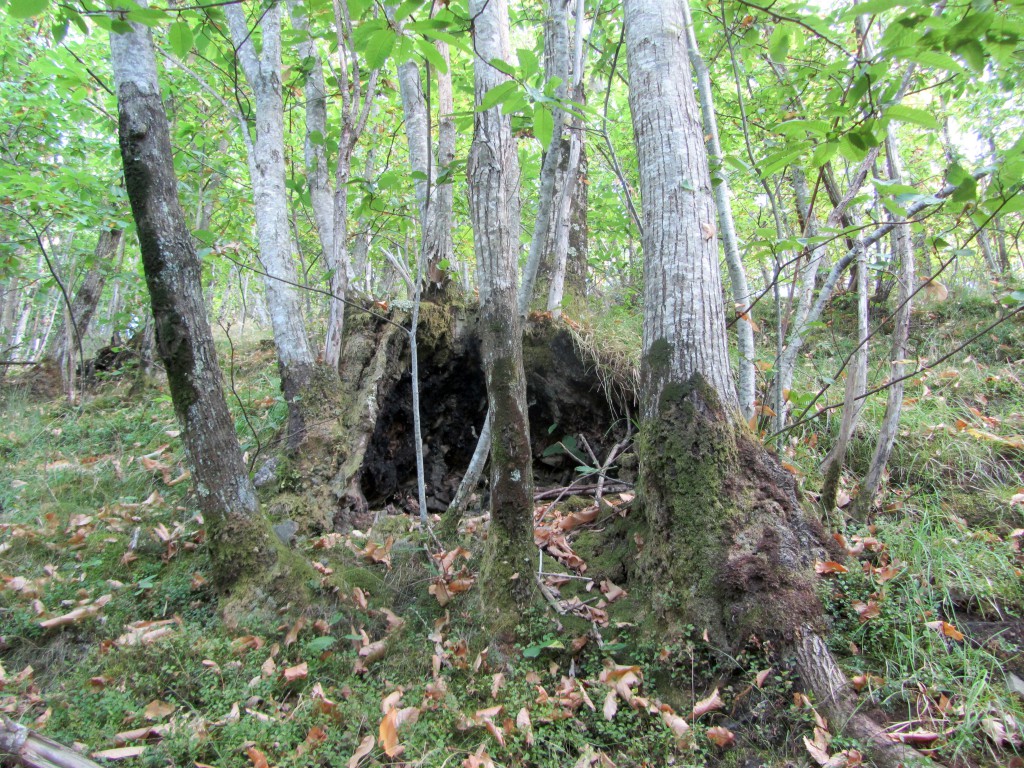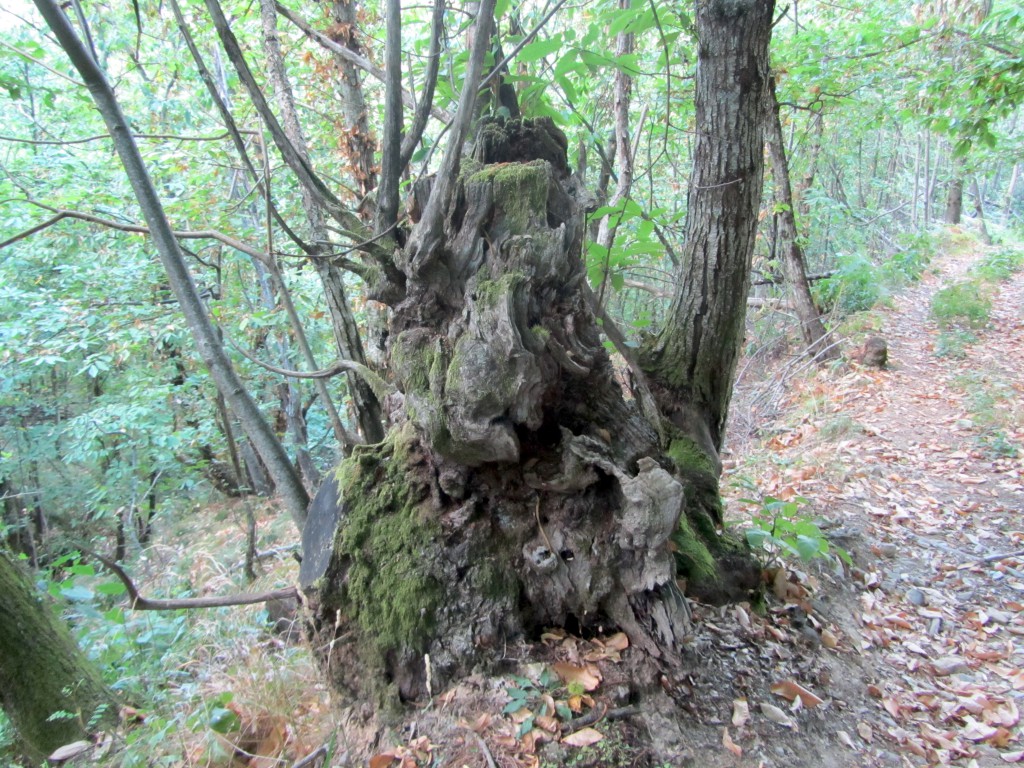We were on the lookout for ancient trees. I asked for directions at our local Tourist Information in Bagni di Lucca. The forests here are mostly sweet chestnut and we were told that there were some Castagni Monumentali in the hills of the Garfagnana, high above the town.
We followed the winding road in the direction indicated, passing a sign for Prato Fiorito (Flowery Meadow), climbing sharply on twisting hairpin bends, catching glimpses of eye-watering vistas and here and there intriguing off-road tracks that looked like they might lead us to ancient woodlands.
Sadly we were not equipped for dirt roads. We drove on through endless green tunnels but these trees did not look old, so we just kept on going until eventually there were no more, we were above the tree line and the flowery meadow turned out to be Monte Prato Fiorito, the highest mountain hereabouts.
Beyond the pine logs, the ancient chestnut trees were now somewhere down below. We turned around and unravelled our ascent, with no destination, just feeling our way back under the greenwood trees.
I’d heard of the Orrido di Botri, the largest, deepest, most beautiful gorge in Tuscany, home to eagles, porcupines, marmots, pine martens and wolves. It’s very narrow and only accessible by walking along the riverbed. Hard hats, sensible shoes and a change of clothing recommended, so we gave it a miss.
But now, in the comfort of my own home, watching this video I wonder if we should have given it a go.
Instead we chose Montefegatesi, spied earlier from a bend in the road as we crested a neighbouring hill, sitting pretty like a jewel carved out of the forest, it looked an inviting place to stop for lunch.
There’s a tiny chapel in the piazza, where the conversation seems to be mostly about wood.
At the top of the town there’s a punto panoramico, a viewpoint to share Dante’s point of view.
The circuit of narrow streets brought us back down to the piazza. At first glance the bar appeared to be closed, it was long after lunchtime, but when we asked for food they prepared us each a plate of fresh spaghetti with homemade pesto and pecorino cheese, simple and perfect and just what we needed!
Across the square, fixed to the wall, a framed poster, singing the praises of the sweet chestnut tree. Luckily its song is not lost in translation (thanks Anna!) and we can all sing along. It seemed unlikely now that we would find the mythical Castagni Monumentali and maybe this was the closest we’d get.
The Chestnut Tree
King of the forest
Praised from ancient times
For the gifts it distributes
And the gifts it has given.
I have used it on my roof
It burns in my fireplace
I have used it to build my bed
And the cot for my child.
And more: doors, windows, chests, floors
Simple but important tools
Which nourish emotions and reveal feelings
Reminding us of the past while looking ahead.
Chemistry, medicine, history,
And not least yearning poetry
Have used it since ancient times,
Illuminating mind and imagination.
Crowns woven with its beautiful leaves
Adorn the heads of young children
When they play innocent battles
While awaiting their destiny.
To those seeking food it has provided bread,
“bread of wood”, so as not to go hungry
Then necci, polenta, chestnut cake, porridge
Which warm the heart and defeat the cold.
Raw chestnuts, dried chestnuts,
Boiled or hot crunchy chestnuts,
A mythical fruit which has no rival
When served with good wine at a convivial gathering.
Finally when the smoke from the drying cabin
Wraps around the misty woodland
The King Chestnut has shed all it had,
Without asking for anything it has given everything away.
We said goodbye to Montefegatesi and its imagined monumental chestnut trees.
We drove the green road in the dappled light shining through the young trees, still wondering where the old trees were, and how could it be that there was so much new growth here.
At the first opportunity I pulled over and got out. The call of nature beckoned. I walked among the trees looking for Castagni Monumentali. Somewhere these saplings must have an ancestor.
And far too slowly it dawned on me that this is a garden, constantly being tended and cultivated. That’s why there are so many little trucks carrying logs, and why there are so many woodpiles.
The trees are regularly trimmed and pruned and harvested. Most of them are coppiced which is why they all look like saplings. These ancient trees are continually being renewed.
New growth springs eternal from ancient boles. Few of these trees ever become monumental but all of them are ancient, their lives extended by careful coppicing.
This great conical chestnut bole is a Montecastagno.
These hills are covered in a blanket of trees, stitched together with a network of invisible paths that only become apparent when we stop to look. I could have walked them for miles, if only I’d known where I was going, if I’d just been a little more prepared, we might have found those ancient giants.


